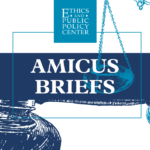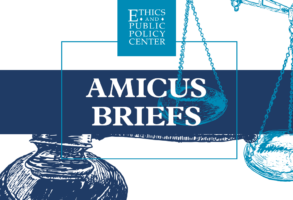
Published October 26, 2023
On October 2, 2023, the EEOC published proposed “Enforcement Guidance on Harassment in the Workplace.” The Commission invites public comment on its proposal until November 1.
The guidance consolidates, supersedes, and builds upon several earlier EEOC guidance documents on harassment. The EEOC explains the updated guidance “reflects notable changes in law, including the Supreme Court’s decision in Bostock v. Clayton County, the #MeToo movement, and emerging issues, such as virtual or online harassment.”
While the guidance does “not have the force and effect of law” and is “not meant to bind the public in any way,” it lays out the Commission’s positions, and it is intended to “provide clarity to the public” and “serve[] as a resource” for EEOC staff, other federal agencies, employers, employees, practitioners, and courts considering harassment issues.
The guidance covers the laws EEOC enforces: Title VII (race, color, sex, religion, and national origin), Age Discrimination in Employment Act (age), Americans with Disabilities Act (disability), and Genetic Information Nondiscrimination Act (genetic information). However, even though the guidance references pregnancy (which is covered by Title VII’s prohibition against sex discrimination), it makes no mention of the most recent law EEOC is tasked with enforcing—the Pregnant Workers Fairness Act (PWFA). In the EEOC’s recently proposed regulations implementing the PWFA, the Commission proposed adding “harass” to the statutory list of prohibited activities in the Act’s coercion provision.
The proposed harassment guidance explains the Commission’s position on what constitutes unlawful harassment, including causation and liability standards, and provides examples. Below, I highlight several areas that may be of particular interest or concern.
Race and Color
The guidance states “Race-based harassment includes harassment based on a complainant’s race, e.g., harassment because the complainant is Black, Asian American, white, or multiracial.” Without explanation, the EEOC repeatedly capitalizes “Black” while lowercasing “white” when referring to a person’s race or color. This unequal treatment based on race/color is considered by many to be discriminatory.
Abortion
Following the EEOC’s controversial proposal to mandate abortion accommodations under the PWFA, the guidance states sex-based harassment also includes harassment based on “pregnancy, childbirth, or related medical conditions,” which can include “harassment based on a woman’s reproductive decisions, such as decisions about contraception or abortion.” In support, EEOC cites its (non-legally binding) pregnancy guidance, two circuit court cases, and a district court case. “Reproductive decisions,” a term found nowhere in Title VII, are by definition broader than the statutory language of “pregnancy, childbirth, or related medical conditions.”
Unlike the EEOC’s proposed PWFA regulations that went out of the way to avoid using the term “women” when discussing pregnant employees, the proposed harassment guidance uses the term “woman,” perhaps because Title VII explicitly protects “women affected by pregnancy, childbirth, or related medical conditions” (emphasis added).
Sexual Orientation and Gender Identity
Citing to Bostock, the guidance states that “sex-based harassment includes harassment on the basis of sexual orientation and gender identity, including how that identity is expressed.” The EEOC explains, “Bostock itself concerned allegations of discriminatory discharge, but the Supreme Court’s reasoning in the decision logically extends to claims of harassment. Indeed, courts have readily found post-Bostock that claims of harassment based on one’s sexual orientation or gender identity are cognizable under Title VII.”
The guidance provides examples of what such harassment could include:
epithets regarding sexual orientation or gender identity; physical assault; harassment because an individual does not present in a manner that would stereotypically be associated with that person’s gender; intentional and repeated use of a name or pronoun inconsistent with the individual’s gender identity (misgendering); or the denial of access to a bathroom or other sex-segregated facility consistent with the individual’s gender identity.
Example 4 provides a hypothetical scenario elaborating on the Commission’s position on harassment based on gender identity.
Jennifer, a cashier at a fast food restaurant who identifies as female, alleges that supervisors, coworkers, and customers regularly and intentionally misgender her. One of her supervisors, Allison, frequently uses Jennifer’s prior male name, male pronouns, and “dude” when referring to Jennifer, despite Jennifer’s request for Allison to use her correct name and pronouns; other managers also intentionally refer to Jennifer as “he.” Coworkers have asked Jennifer questions about her sexual orientation and anatomy and asserted that she was not female. Customers also have intentionally misgendered Jennifer and made threatening statements to her, but her supervisors did not address the harassment and instead reassigned her to duties outside of the view of customers. Based on these facts, Jennifer has alleged harassment based on her gender identity.
This example calls a person’s name and pronouns that correspond to the person’s gender identity “correct,” implying that use of pronouns that correspond to a person’s biological sex are “incorrect.” Citing several unreported district court cases, the EEOC notes, “Courts—even prior to the Supreme Court’s Bostock decision—have viewed evidence of intentional misgendering as supportive of a hostile work environment claim.”
The guidance fails to mention the First Amendment or protections for free speech and religious exercise. A 2021 Sixth Circuit decision, Meriwether v. Hartop, allowed a professor’s First Amendment challenge to a university pronoun policy to proceed on free-speech and free-exercise grounds. The case ultimately settled with the university agreeing to pay $400,000 in damages and attorney’s fees.
To support its position on bathroom access consistent with a person’s gender identity, the EEOC cites to Title IX bathroom cases, including the Fourth Circuit decision in Grimm v. Gloucester County School Board.
Other agencies, such as the Department of Health and Human Services and the State Department, have imposed similar gender identity pronoun and bathroom policies. On October 10, a group of Senators sent a letter to the State Department raising compelled speech and religious liberty concerns with its policy, citing the First Amendment, Title VII, and the Religious Freedom Restoration Act (RFRA).
Religious Expression
Regarding religious expression, the guidance states: “If a religious employee attempts to persuade another employee of the correctness of his beliefs, the conduct is not necessarily objectively hostile. If, however, the employee objects to the discussion but the other employee nonetheless continues, a reasonable person in the complainant’s position may find it to be hostile.”
The EEOC also provides a note on “special consideration when balancing anti-harassment and accommodation obligations with respect to religious expression.” The guidance acknowledges that while “Title VII requires that employers accommodate employees’ sincerely held religious beliefs, practices, and observances in the absence of undue hardship,” employers “also have a duty to protect workers against religiously motivated harassment.” Specifically, “[e]mployers are not required to accommodate religious expression that creates, or reasonably threatens to create, a hostile work environment. As with other forms of harassment, an employer should take corrective action before the conduct becomes sufficiently severe or pervasive to create a hostile work environment.”
Again, the guidance fails to acknowledge additional laws protecting religious expression and exercise for employees, such as the First Amendment and RFRA.
Similarly, the guidance fails to acknowledge, much less discuss, protections allowing religious employers to make employment decisions according to their religious beliefs under the First Amendment ministerial exception, Title VII’s religious organization exemption, and RFRA.
Social Media
The guidance states harassment could occur in non-work-related contexts but impact the workplace, such as social media posts. The EEOC explains, “Given the proliferation of digital technology, it is increasingly likely that the non-consensual distribution of real or computer-generated intimate images using social media can contribute to a hostile work environment, if it impacts the workplace.” According to the guidance, social media posts on a personal social media page could contribute to a hostile work environment if an “employee learns about the post directly or other coworkers see the comment and discuss it at work.” This means private social media posts about abortion, marriage, gender, or sexuality could come under scrutiny for contributing to a hostile work environment.
Rachel N. Morrison is a Fellow at the Ethics and Public Policy Center, where she directs EPPC’s HHS Accountability Project. An attorney, her legal and policy work focuses on religious liberty, health care rights of conscience, the right to life, nondiscrimination, and civil rights.











